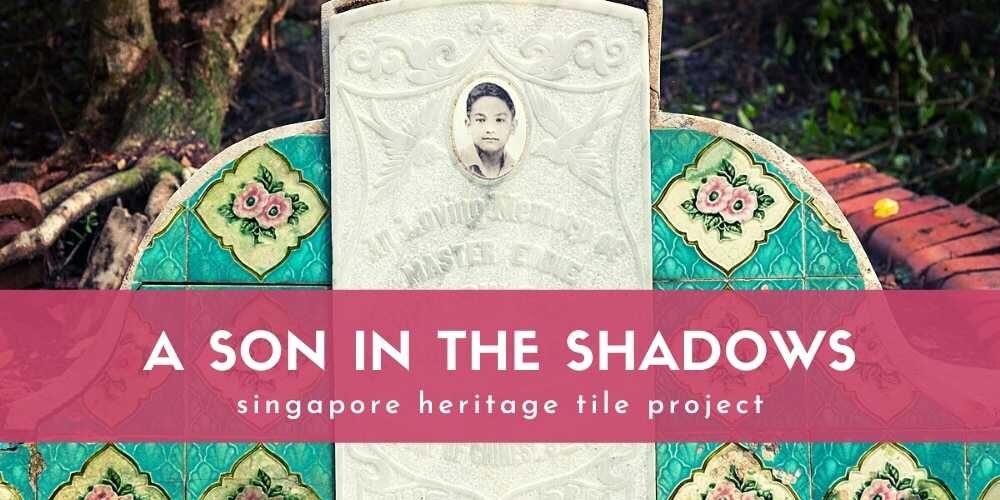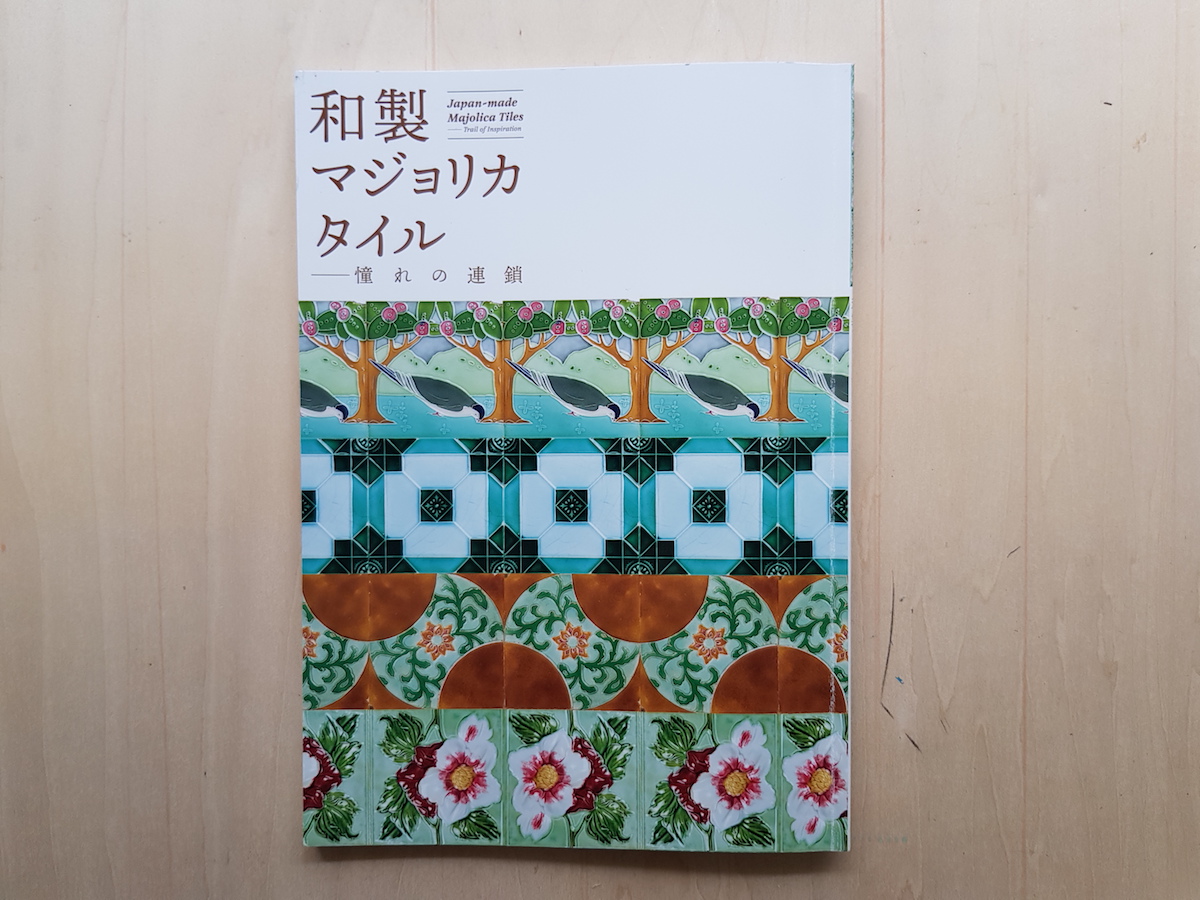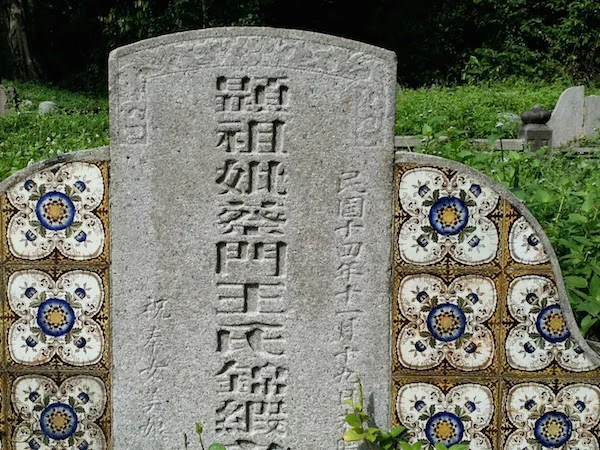A school boy smiles softly, his portrait capturing a precious moment of youth. Eddie Chan Sin Chuan’s image looks out from the delicate cascade of pink roses and emerald scallops. His colourful tomb suggests life and vigour, however, he was buried during Singapore’s darkest era.
Read MoreMy Great-Grandfather's Clan House
Passage, a magazine published by Friends of the Museums Singapore, featured an article about my great-grandfather’s clan house in Singapore. Read the PDF version
Singapore's Vintage Tiles: An English Affair
The tropical jungle of Singapore forms the backdrop for an international love affair with England.
Read MorePeranakan Tiles: Peacocks on Parade
Read more about vintage peacock tiles at Bukit Brown Cemetery, Singapore.
Read MorePeranakan Tiles: The Japanese Connection
Peranakan tiles, as they are now often called in Singapore, have symbolised a love of foreign design for over a century. With their bright colour palette and bold motifs, these heritage gems are often assumed to be of European origin due to their gentle and classical designs. So it’s a surprise to find out that many popular designs in Singapore were made Japan! Why is this the case?
A very popular ‘high relief’ Japanese tile with English design origins
Japanese tiles entered the global tile market for a short but very active period between WWI and WWII. Although it might seem natural for Japan to export ceramics due to their long history of beautiful creations, it took some time for the nation to transition from the traditional hand-made way of producing ceramics to modernised methods involving machinery and new types of chemicals.
The same floral tile on the bottom row of this catalog about Japanese tiles.
In fact, Japan turned to foreign consultants such as German-born scientist and educator Gottfried Wagner to help fast-track things. Dubbed the ‘father’ of modern Japanese ceramics, Wagner was invited to Japan in 1868 to work for an American trading company. He quickly moved onto his true calling as an educator and researcher, and successfully trained the first generation of Japanese technicians in tile technology.
Enjoying this blog post so far? Become a supporter to continue reading
Tile Tidy Up @ Bukit Brown Singapore
Vintage Tile Tidy Up
I recently reached out to my circle to see if anyone was available at two days notice to help me clean up graves! I couldn’t believe the response to my unusual request with over 9 people pledging to give up their precious Saturday morning in almost 80% humidity. Dozens of other people emailed me to say that they loved the idea and could they join next time?!
Why, Why, Why?
Cleaning up a number of tile tombs is a necessary part of preparations for a book I am currently writing, tentatively called Singapore Heritage Tiles: A Decorative Legacy of Love. I’m keen to showcase a selection of vintage tiles from spaces connected to me personally in order to better understand their designs, varieties and origins. To me, decorative tiles are also symbol of love and life. Get exclusive updates and videos on this project
A now or never project
Since I launched this project in April 2019, I’ve visited Bukit Brown Cemetery over 10 times as part of my research activities. With four members of my family still buried there, my project is urgent with some speculating that the cemetery may be completely removed to make way for development in the near future. With the help of history enthusiasts and cemetery caretakers, I’ve narrowed down my focus to some 200 types of vintage tiles I believe to be rare and special.
a crazy-rich-in-culture project
It’s a bit of a crazy project since there are a reported 100,000 graves at Bukit Brown Cemetery, which is only one of four cemeteries in the area. However, I feel that tiled graves make up only 10 percent of all tombs, and date back mainly to the 1920’s and 1930’s. Some shophouses in Chinese Peranakan enclaves carry similar tiles, and can still be found in pockets around Singapore, Malaysia and other parts of Southeast Asia. However, such tiles are in danger of being overlooked and undervalued without dedicated research into their styles, motifs - and international origins! Get exclusive updates and videos on this project
Connecting everyone to a beautiful past
This passion project isn’t something that I’ve taken up lightly - so I do truly thank those who are supporting me in this journey. It’s a privilege to share my findings with those who are keen to enjoy a timeless beauty that is an important part of Singapore’s architectural history. I hope that my research sparks a way for others to connect to this glorious past, and means for the next generation to understand and appreciate their heritage.
Support my work by liking and sharing my project’s Facebook page or Instagram account. Look out for more updates to come!
Singapore Tile Trail: The Journey Starts
Thanks for supporting my passion project! I'm really excited to be helping uncover a special chapter of Singapore’s decorative past in an exploration of beauty, heritage and life. Over the last seven years, I've been privileged to connect to culture in this fascinating country. I'll be sharing my findings through a full-colour book to be released later in the year.
Let me tell you a little more about myself, and how this idea for a book came about. My move to Singapore in 2012 was prompted by the birth of my first child, and a growing personal desire to learn more about my father's heritage. Shortly after settling in, my uncle called me and asked me to help him deal with some 'family matters'. I had no idea that I was to attend the exhumation of my great grandfather and his brother.
Amid what looked like a tropical jungle, I was shocked to witness the bones of my ancestors dug up. This unforgettable event triggered the start of a more serious effort to trace my father's heritage. I came to learn more about this overgrown location, otherwise known as Bukit Brown Cemetery. Volunteers, otherwise known as the ‘Brownies’, led me to the further family graves, including my Peranakan great grandparents and my Hokkien great-great-grandfather.
My research then took on a more urban flavour, with trips to clan houses, family properties in downtown and distant suburbs, and various temples. Along my travels, I began to notice the presence of beautiful decorative ceramic tiles. It was if they were following me, or trying to tell me something.
At my Hokkien great grandfather's clan house, I was amazed to see a massive number of floor and wall tiles covering the entire two floors. I remembered the tiles I'd seen on the outside of my great grandfather's shophouse on Club Street, and started to feel that the tiles were a symbol of my connection to Singapore, and a bridge to my father's culture.
I look forward to sharing the timeless beauty and hidden stories of these stunning artefacts for current and future generations.
Get regular updates on my book project with exclusive live events and insights into Singapore’s decorative past
Where to See Peranakan Tiles in Singapore
Functional, decorative and inspirational, these fragile objects are a beautiful reminder of Singapore’s past through bust and boom. Learn more about Singapore’s beautiful shophouse tiles.
Read MoreWhere to See Peranakan Culture In Singapore
Photograph by author
Learn about the best places to see Peranakan culture in Singapore.
Read MoreBukit Brown Cemetery: Singapore's best open air museum
Delicate design of English transfer print tiles on a gravestone.
Forget the indoor museums - literally touching the past is what Singapore's Bukit Brown Cemetery offers!
Read MoreWhere To Buy Nyonya Sarong Kebaya in Singapore
Singapore is famous for its gorgeous sarong kebaya, the Nyonya outfit that inspired the shapely uniform worn by female flight attendants of Singapore Airlines. But it's not easy to find where the good shops are unless you've spent time pounding the pavement! Save your feet and check out my blog post on where to buy this unique sarong skirt and kebaya blouse outfit loved by many Peranakan ladies.

























